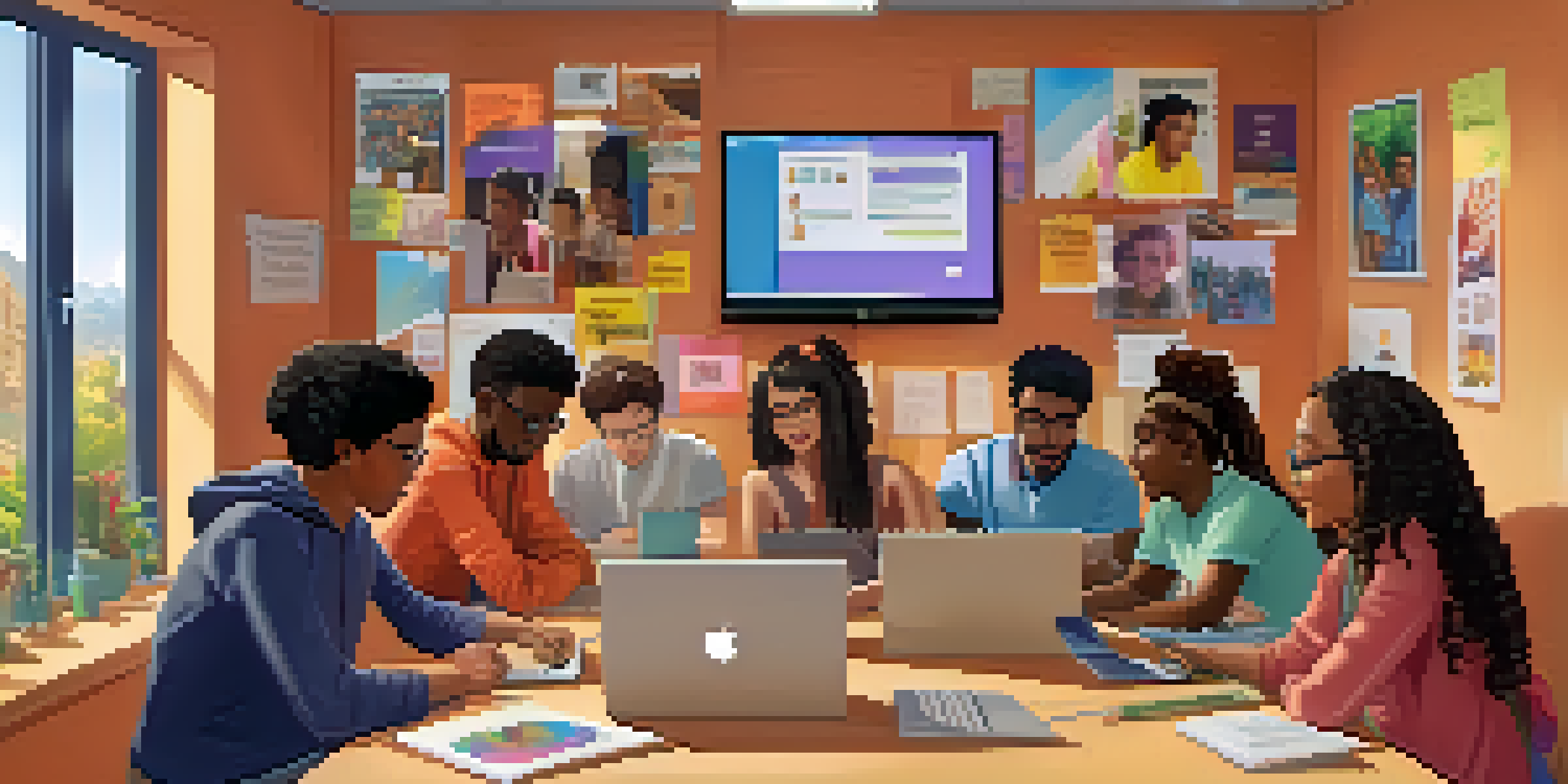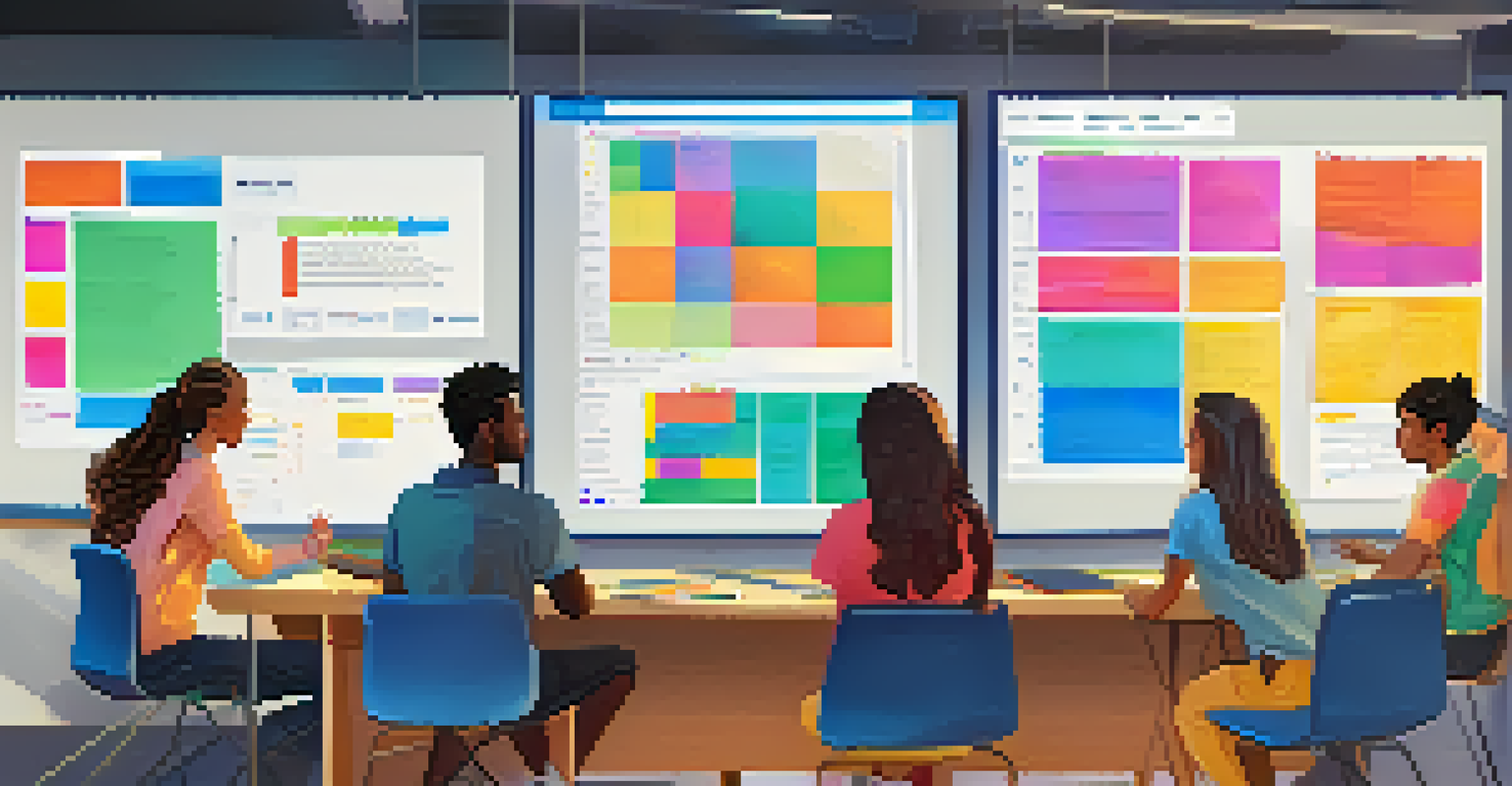Building Community in Virtual Classrooms: Tips and Tools

Understanding the Importance of Community in Virtual Classrooms
Building a sense of community in virtual classrooms is crucial for student engagement and retention. When learners feel connected, they're more likely to participate actively and support one another. This connection mimics the social interactions found in traditional classrooms, which can enhance the overall learning experience.
Alone we can do so little; together we can do so much.
Moreover, a strong community fosters collaboration, allowing students to share insights and resources. This collaborative spirit not only enriches their understanding but also builds essential skills for future teamwork. Think of it as a virtual support group where everyone thrives on collective growth and shared experiences.
Lastly, a positive community can reduce feelings of isolation that often accompany online learning. When students feel they belong, they are more motivated to overcome challenges and seek help when needed. In essence, a vibrant virtual community can transform learning from a solitary endeavor into an engaging journey.
Utilizing Icebreakers to Foster Connections
Icebreakers are a fantastic way to kick off virtual classes and encourage interaction among students. Simple activities, like sharing fun facts or personal stories, can break down barriers and pave the way for deeper connections. Think of icebreakers as the warm-up exercises before a game; they set the tone for a more engaged session.

These activities can also help instructors gauge students' interests and personalities, which can guide future discussions and group work. For instance, if you discover several students share a common hobby, you can create small discussion groups around it. This not only builds camaraderie but also makes learning more relatable and enjoyable.
Community Boosts Engagement
Building a sense of community in virtual classrooms enhances student engagement and reduces feelings of isolation.
Remember, the goal of icebreakers is to create a comfortable atmosphere where everyone feels valued. By incorporating diverse and inclusive activities, you cater to different personalities and backgrounds, ensuring that all voices are heard and celebrated.
Leveraging Technology for Enhanced Interaction
In today’s digital landscape, technology plays a pivotal role in building community within virtual classrooms. Tools like discussion forums, breakout rooms, and collaborative documents allow for real-time interaction and shared learning experiences. These platforms not only facilitate communication but also mimic the collaborative nature of face-to-face interactions.
The whole is greater than the sum of its parts.
For instance, using breakout rooms during lectures can provide students with a safe space to discuss ideas in smaller groups. This not only encourages participation from those who may be hesitant to speak up in larger settings but also strengthens relationships among peers. Think of it as creating a cozy nook in a bustling café, where meaningful conversations can unfold.
Additionally, utilizing interactive tools such as polls and quizzes can keep the energy high and the interactions lively. These tools can turn passive learning into an engaging experience, where students actively contribute and feel invested in the class dynamics.
Creating a Safe and Inclusive Environment
A safe and inclusive virtual environment is foundational for building community in online classrooms. Students should feel free to express themselves without fear of judgment, which fosters openness and honesty. It's essential for educators to set clear guidelines that promote respect and understanding among all participants.
Incorporating diverse perspectives into discussions can also enhance inclusivity. When students see their backgrounds and experiences reflected in the curriculum, they feel more connected and valued. This can be as simple as inviting guest speakers from various fields or encouraging students to share their unique insights during discussions.
Icebreakers Spark Connections
Utilizing icebreakers helps students connect and fosters a comfortable atmosphere for open communication.
Moreover, regularly checking in with students about their experiences can help identify any issues early on. Creating an open-door policy, even in a virtual setting, signals to students that their voices matter and that support is available when needed.
Encouraging Collaboration Through Group Projects
Group projects are an excellent way to foster collaboration and build community in virtual classrooms. Working together towards a common goal encourages students to communicate and rely on each other’s strengths. This not only enhances their understanding of the subject matter but also simulates real-world teamwork scenarios.
When assigning group projects, consider diverse group dynamics to ensure a mix of skills and perspectives. This diversity can spark creativity and lead to innovative solutions, enriching the learning experience for all involved. Think of it as a potluck dinner, where everyone brings something unique to the table.
Additionally, providing students with clear roles and responsibilities can help streamline collaboration. By defining each member’s contributions, you empower them to take ownership of their work and promote accountability, which is vital for a cohesive group effort.
Regular Feedback to Strengthen Community Bonds
Regular feedback is essential for nurturing community bonds in virtual classrooms. It helps students understand their performance and encourages open communication between them and their instructors. Constructive feedback fosters growth, making students feel valued and supported on their learning journey.
Moreover, soliciting feedback from students about the course and community dynamics can provide valuable insights. This two-way feedback loop shows that you care about their experiences and are willing to make adjustments to enhance their learning environment. Picture it as a garden; asking for feedback helps you understand which plants are thriving and which ones need extra care.
Celebrate Achievements Together
Recognizing and celebrating student achievements cultivates a sense of belonging and motivates collective growth.
Incorporating peer feedback can further deepen connections among students. When they evaluate each other’s work, they develop a sense of responsibility and appreciation for their classmates’ efforts, strengthening community ties and enhancing collaborative spirit.
Celebrating Achievements to Foster Community Spirit
Celebrating achievements, big or small, is a powerful way to cultivate community in virtual classrooms. Recognizing students' efforts and milestones fosters a sense of belonging and pride within the group. Whether it’s sharing a student’s project success or acknowledging improved participation, these celebrations create positive energy and motivation.
You can create a dedicated time during classes to highlight achievements, or use digital badges and certificates to recognize accomplishments. These gestures not only boost individual morale but also inspire others to strive for their own successes. It’s akin to a pep rally, where everyone comes together to cheer each other on.

Additionally, encouraging students to share their own achievements fosters a supportive environment where everyone feels empowered to celebrate one another. This collective celebration reinforces the idea that each member's success contributes to the overall community, creating a cycle of encouragement and collaboration.